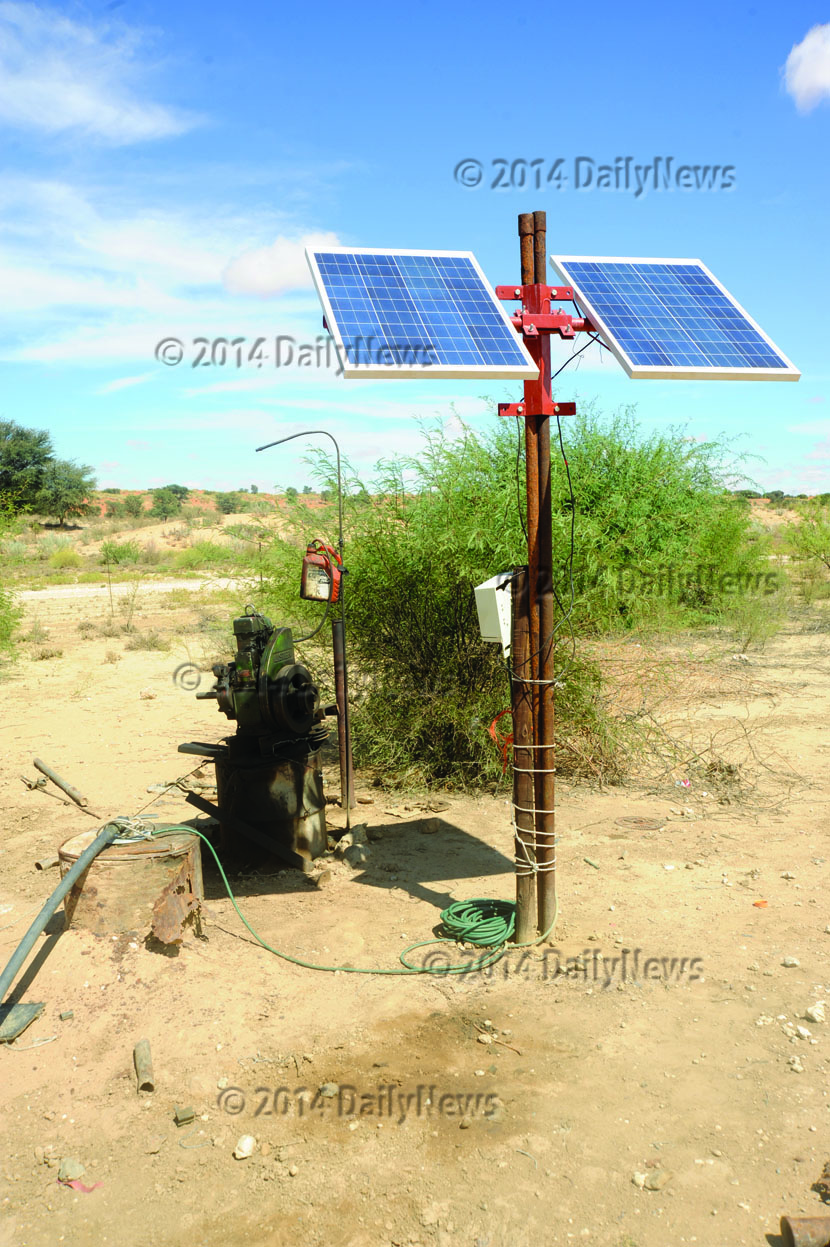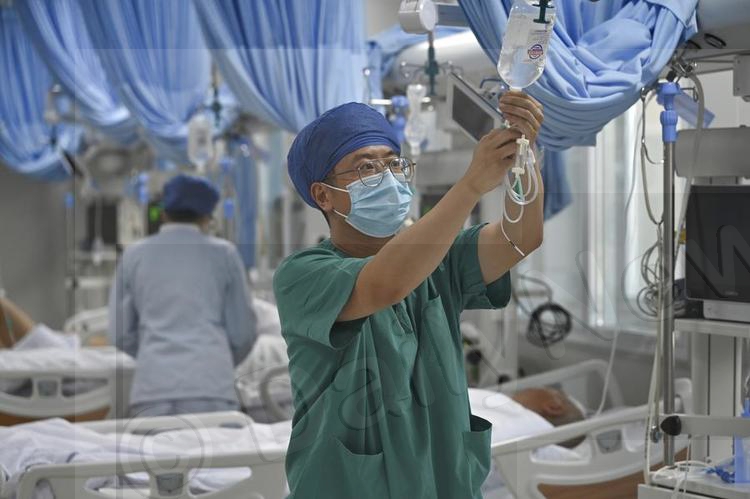Let the sun shine
01 Apr 2014
A glistening solar array moves every few minutes as it tracks the angle of the sun to generate power. The renewable energy output is in turn converted into electricity that is used to pump water from a nearby borehole. A large herd of Nguni cattle gathers along the water troughs to take in gulps of water to quench their thirst from the day’s heat.
Welcome to Grass Vlei Farm, located about 20 km from Struizendam in the southern part of the Kgalagadi District.
The solar panels shimmering in the sunlight turn out to be the focal point in an area far away from all modern amenities. Remote as it is, it appears, farmers in the area have gone ahead to derive benefits presented by green electricity.
As long as the sun shines, farmers in this area will continue to enjoy the benefits that the abundant solar energy offers.
In Kgalagadi, livestock farming is a source of livelihood to most farmers. Therefore, doing things right from scratch is crucial for better returns on investment because livestock rearing is a business enterprise, not a hobby.
Recently, some farmers in this remote area opted for an off-grid solar system to maintain a continuous power supply to pump water for their livestock and also cut paralyzing diesel costs.
Although load shedding and unplanned power outages are not experienced here because the area is far from becoming a planning area, photovoltaic technology has proved to bridge the existing gap between rural and modern Kgalagadi.
With that in mind, it is worth admitting though that the solar energy industry in Botswana is still at its infancy. Some farmers who have gone the route of green electricity do not want to turn back. One such farmer is Mr Isaac Jacobs Titus, who farms at Ghanahoek farm.
He inherited the 60 000 ha farm inherited from his father. Divided into six paddocks, the farm has more than 400 cattle, about 400 sheep, 200 goats, horses and donkeys. The farm has nine boreholes but six of them are not operating because of low yields.
Out of the three operational boreholes, only one is using solar energy. Mr Titus decided to install the solar energy system in 2010. According to his observation, one needs to have two boreholes: one equipped with the mono pump; the other with solar panels so that during gloomy days when the sun rays are no more, there will still be power for the farm.
Titus advises that a generator can also be used on the solar panel.
With the normal borehole, he explains that one ought to use two pumps for the borehole, however, cautioning that the pump that goes down cannot be repaired locally.
Taking it for repair at the manufacturer, mostly in South Africa, can take up to three days for it to be back at the farm. Border restrictions also pose a challenge as opening hours are from 8a.m. to 4:30p.m. That is why it is crucial for a farmer to always have two pumps when using a mono pump diesel operated borehole.
With the solar panels equipped, Mr Titus says it is cheaper to use them to generate power.
Plastic pipes are used to equip the borehole instead of using galvanized ones they are easily corroded by the salty water.
The pumps can only last for two to three years and it is expensive to buy them with a single pipe costing around P300. Also, he says with solar panels, smaller pipes are used -- they are cheaper and last forever.
“My borehole was 44m deep. I wanted a pipe that could water 100 cattle per day. Then I installed a solar array at a cost of P25 000,” recalls Mr Titus.
The total cost of installation, according to him, depends largely on how deep the borehole is and the number of cattle that will be watered.
Furthermore, costs associated with equipping a normal diesel powered borehole are exorbitant. For example, Mr Titus says a new engine cannot be bought for less than P100 000. The rods, element and mono pumps are all expensive. But a solar powered borehole is maintenance free unless the pump develops a technical problem.
Taking out the pump from the borehole also is not a problem as “three guys can do it quicker whereas the mono pump will involve a lot of labour and even a car to pull the rods”.
Solar panels do not need the sun to be hot, as long as the sun shines, and the panels keep rotating in the direction of the sun, one can get 10 to 11 hours of energy per day. If they are not rotated they can only produce six to seven hours of energy per day.
Alternatively, he clarifies that batteries can be used to store electricity for later use. However, the capacity of the storage should be more than the output in case of emergency.
Mr Titus, however, highlights that just like any other product, solar panels also have their own shortcomings albeit limited.
“I only had two occasions when I had problems with my system since I installed it in 2010 when lightning cut off the pump and burned it,” recalls Mr Tutus.
He says he only learnt later that when it is cloudy, it is switched off and a generator can be connected to the system which will then switch off automatically when there is lightning. In that way, it will not affect the pump.
Mr Titus appeals to government to consider helping farmers to equip their boreholes with solar panels. Mr Jacobs Hermans Jacobs, a worker at Mr Rach Bremmer’s farm in Grass Vlei, says they used diesel engines to pump water from their four boreholes which were all later changed and equipped with solar energy last year in March.
Mr Jacobs explains that before they converted to solar energy, they used to have a problem with the rods that would often fell inside the borehole.
They would in turn use a reservoir to store water that only lasted for two weeks. Since they installed the solar panels, watering cattle has never been a hassle. Ends
Source : BOPA
Author : Lindi Morwaeng
Location : VLEI FARM
Event : Interview
Date : 01 Apr 2014






